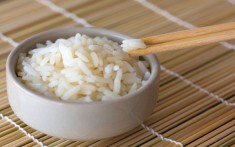Lisa Garber
Activist Post
A year after consumer groups pressured the Food and Drug Administration to define standards for arsenic in apple juice, they are now forming a similar push for rice. A new study shows an unsettling high level of arsenic—a carcinogenic element that appears in inorganic and organic form—in rice grown in southern states, but the FDA is discouraging panic. Still, arsenic in rice is scaring consumers everywhere.
“Our advice right now is that consumers should continue to eat a balanced diet that includes a wide variety of grains—not only for good nutrition but also to minimize any potential consequences from consuming any one particular food,” says FDA Commissioner Margaret Hamburg.
High Levels of Arsenic Detected in Rice
While arsenic is naturally occurring is water, air, food, and soil, only the organic variety passes through the body harmlessly, while inorganic arsenic—found in pesticides and insecticides—are carcinogenic. Consumer Reports’ Urvashi Rangan says, “It doesn’t make sense not to have standards for rice,” especially since inorganic arsenic can, over time, build up in the body.
Meanwhile, the industry group USA Rice Federation claims that American rice growers do not use arsenic-containing pesticides. Higher levels of arsenic were also detected in rice grown in the Southern United States than in rice coming in from Asia or California.
Dangers of Arsenic
One study from last year found that people who eat more rice have more arsenic in their bodies. Toxicologist Christopher States from the University of Louisville in Kentucky says, however, that someone would have to eat “a ton” of rice to obtain enough arsenic to increase their risk of diseases like cancer.
Unfortunately, our bodies meet a daily barrage of toxins and hazards. While many of these are unavoidable and/or relatively harmless, some are unsafe at any level. We don’t know exactly how much arsenic affects us, but long-term exposure of even low doses changes the way our cells cooperate and function. It has been linked to the following diseases:
- Diabetes
- Cancer, especially of the skin, bladder, and lung
- Vascular disease
- Lung disease
The rule of thumb is to play it safe. The news concerning arsenic in rice means to consume less rice for now. But diversify your diet and avoid known toxins and pollutants, and—at least in the meantime—try to buy rice from California.
Additional Sources:
Chron
My Health News Daily
Explore More:
Moderate Levels of Arsenic in Water Can Pose Health Threat
Arsenic in Apple Juice – A Growing Concern
Dangerous Levels of Arsenic, Lead Found in Commercial Apple and Grape Juice
Is There Arsenic in Your Chicken?
Juice May Receive National Standard for Arsenic
This article first appeared at Natural Society, an excellent resource for health news and vaccine information.



Be the first to comment on "Levels of Arsenic in Rice Skyrocket, FDA Urged to Set Standards"